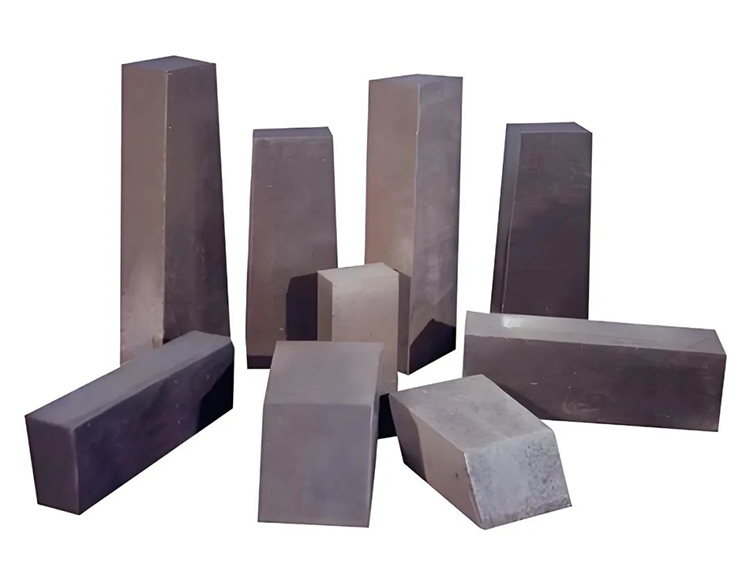The Use of Refractory Materials in Social Development and Their Manufacturing Processes
During the period when technological progress in the steel industry was relatively slow, various new refractory materials were successively developed. The major products widely used in the first half of the 20th century included:
-
High alumina bricks (used in heating furnaces, cement kilns, etc.)
-
Chrome-magnesite bricks (used in open-hearth furnaces, electric furnaces, etc.)
-
Electrocast bricks (used in heating furnaces, glass melting furnaces, etc.)
In the second half of the 20th century, especially after World War II, the following refractory materials came into practical use:
-
Castables (for heating furnaces and other applications)
-
Zirconia-based refractories (for steel ladle linings, nozzles, etc.)
-
Stabilized dolomite bricks (for LD converter linings)
-
Unburned chrome-magnesite bricks (for open-hearth furnaces, electric furnaces, etc.)
-
Silicon carbide (SiC) refractory materials
The development of these refractory materials was driven by several factors:
-
The formalization of specialized techniques within the refractory industry.
-
The expansion of refractory applications beyond steelmaking, into various new types of furnaces and kilns.
-
The active exploration and effective utilization of mineral resources, spurred by the impacts of the world wars.
-
The transfer and application of technologies across different industries.

For example, stabilized dolomite bricks were developed in the UK using domestic resources and were later redeveloped and applied in converters in post-war Japan. Electrocast refractories were developed for use in glass melting furnaces, and castables were inspired by concrete construction techniques, leading to the development of high-alumina cement with minimal impact on setting speed and refractoriness.
The invention of chrome-magnesite bricks (properly described as chromite and magnesia refractory bricks) holds significant historical importance:
-
Chromium oxide refractories were invented in 1885, and magnesia refractory bricks emerged in 1881. However, it took nearly half a century before someone combined these two materials to create chrome-magnesite bricks, a discovery that fundamentally changed the field.
-
Chrome-magnesite bricks were independently invented around 1934 by countries such as the UK, the US, and Austria. In the UK especially, research into their manufacture was highly valued, contributing greatly to the full basification of open-hearth furnace roofs during World War II.
The earliest academic paper on chrome-magnesite bricks was published in the UK in 1931. Subsequent investigations revealed that the Yawata Steel Works in Japan had already started producing and applying chrome-magnesite bricks, with patents filed accordingly, although the specific technical evidence behind these patents remains unclear. The world’s first experiments with fully basic open-hearth furnace roofs using sintered chrome-magnesite bricks (Radex-E) were conducted in Germany and Austria.
As for non-oxide refractories, carbon bricks were widely used in blast furnace hearths around 1920, mainly in Germany and other countries. The use of silicon carbide refractories was still experimental and did not achieve practical success until after the war.
The manufacturing processes developed during this period hold historical significance in the following areas:
-
Electrocast refractory manufacturing
-
Unburned refractory brick manufacturing
-
Castable manufacturing
Electrocast refractory manufacturing, compared to traditional sintering methods, produced materials with a denser microstructure. The melting and solidification process created unique internal structures, initially developed for glass melting furnaces but later applied in steel production due to their high corrosion resistance.
Unburned refractory brick manufacturing involved forming bricks at low temperatures using chemical binders to provide strength, followed by curing processes. Water-hardened cements were the initial binders, later expanding to other bonding agents. Unburned chrome-magnesite bricks typically used additives like MgCl₂ or MgSO₄ to form magnesium oxychloride cement (MgO-MgCl₂-H₂O). These bricks became the primary refractories for open-hearth and electric furnaces. Phosphate binders also began to be used around 1940.
Castables, or refractory concretes, revolutionized furnace construction by enabling monolithic lining methods. Their manufacturing process was simpler than that of unburned bricks and represented a major advance in the development of monolithic refractories. High-alumina cement served as the primary binder, enabling strong performance after casting. When castables first emerged, few foresaw that they would usher in a new era dominated by unshaped refractory materials in the second half of the 20th century. Plastic refractories are essentially similar to castables.
Building on the traditional manufacturing methods of the 19th century, numerous improvements during this period helped establish standardized processes. Technological advances appeared in all stages from crushing to sintering, especially in shaping processes. Prototype equipment for modern techniques, such as oil presses, friction presses, extrusion machines, and rotary presses, were developed during this time.
As for firing kilns, there were significant improvements in both scale and uniformity of temperature distribution. One of the most important milestones was the introduction of tunnel kilns, which enabled continuous firing processes. Originally invented in France in 1751 for glazing ceramics, tunnel kilns were formally adopted for refractory manufacturing in Europe around 1910, starting with the use of the Dressler tunnel kiln.
Yawata Steel Works in Japan introduced the Dressler tunnel kiln in 1933, marking a major advancement. Subsequently, other companies built tunnel kilns as well. The adoption of tunnel kilns led to increased production capacity, improved firing condition management, and lower energy consumption thanks to efficient heat recovery from high-temperature exhaust gases.
The continuous nature of tunnel kiln firing also enabled systematized management of the entire production process, with factory layouts centered around the tunnel kiln to optimize material flow, greatly contributing to modernization. At its peak in 1939, the Yawata refractory plant achieved an annual production (including powdered materials) of 175 tons and 681 tons respectively, with a workforce of 1,000 employees, reaching a remarkable labor productivity of 15 tons per worker per month — an outstanding achievement for that era.
